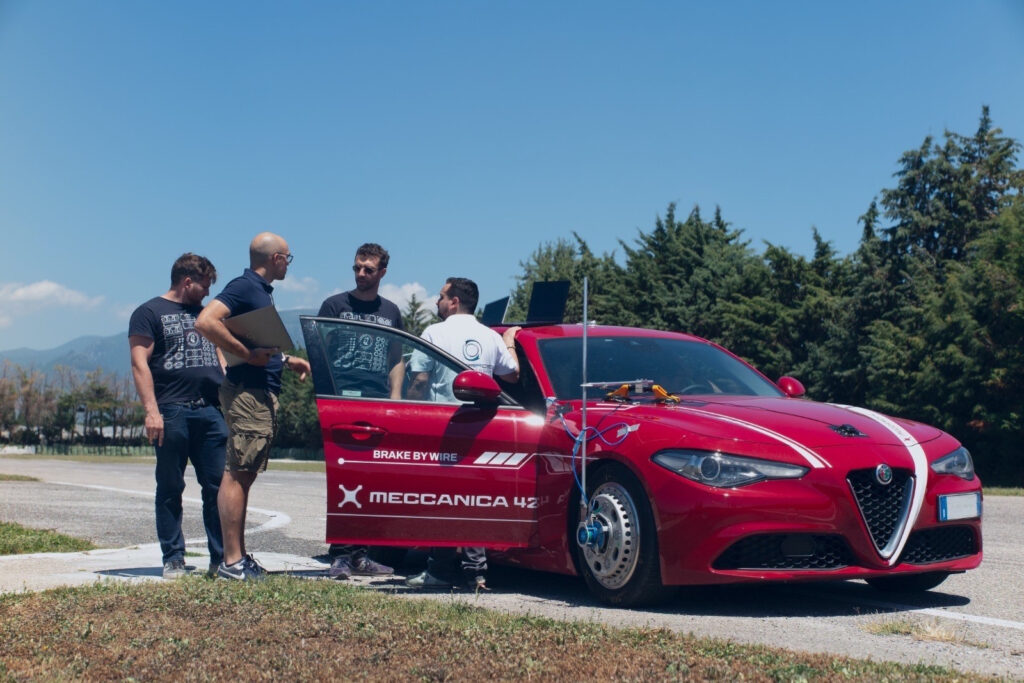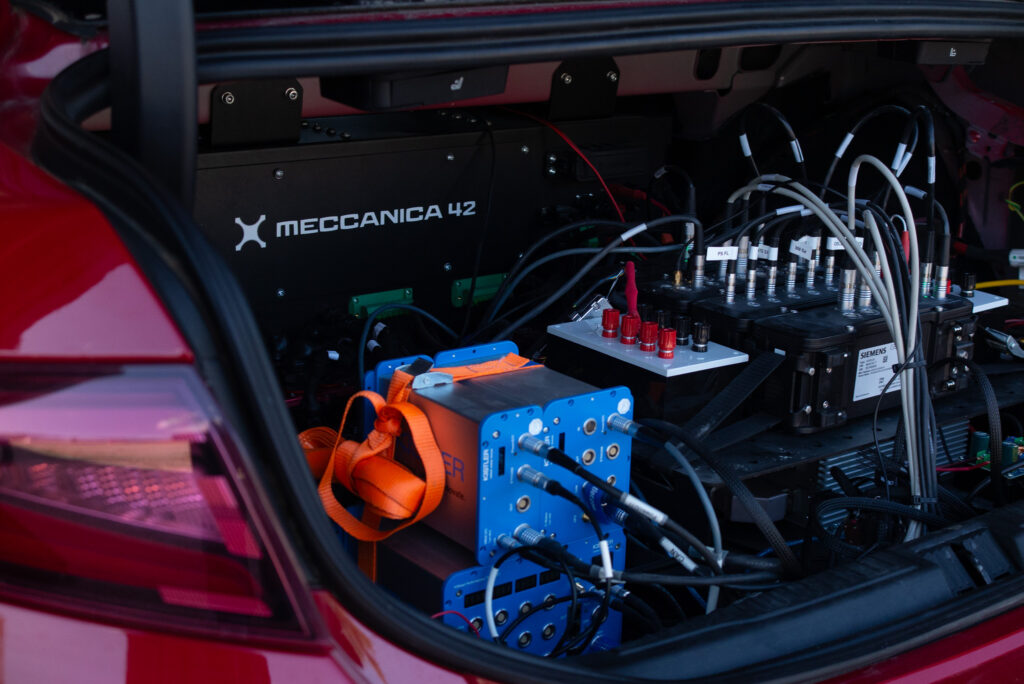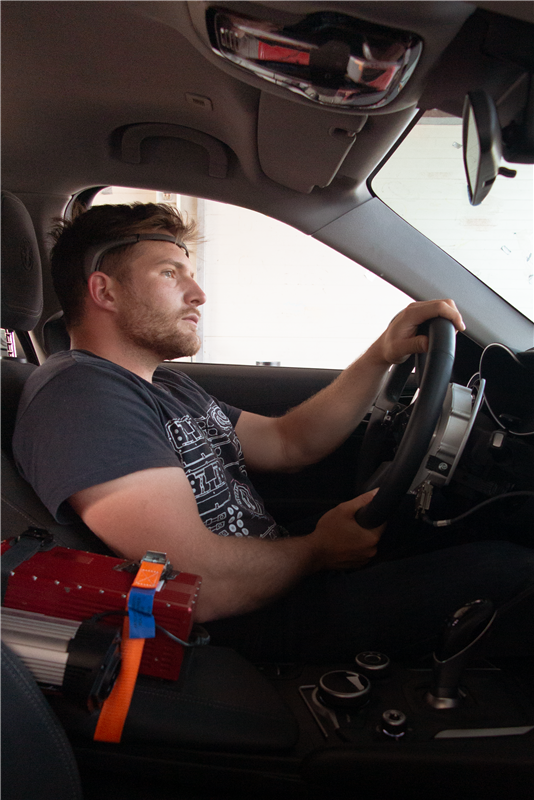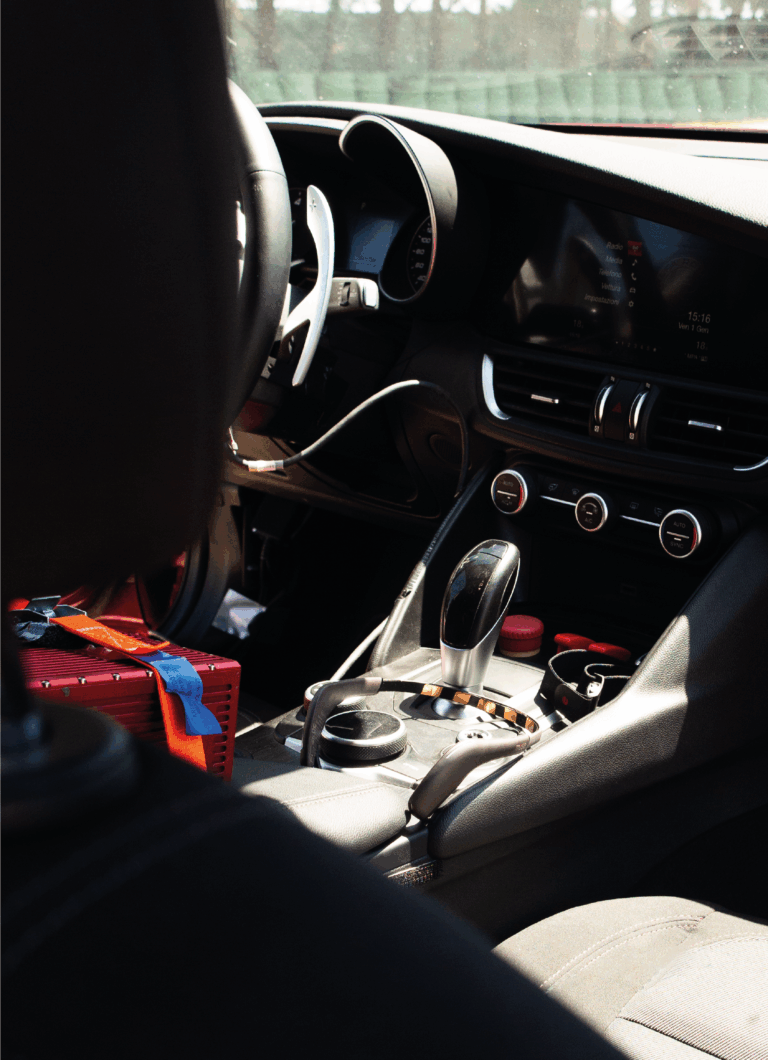Seaside 2025: where technology meets collaboration
Each year, the Sele Circuit hosts Seaside organized by Megaride: an open-air research and development environment where companies, universities, and technology providers converge to test, collect data, and advance their work.
Amidst a diverse ecosystem of vehicles, measurement systems, and specialized expertise, Meccanica 42 conducted a series of targeted experiments aimed at validating both its proprietary technologies and the interfaces with third-party tools, all in real operating conditions.

Collaborative testing
Among the various vehicles on track, Meccanica 42’s demo car served as a shared platform for multiple experiments and partner integrations.
The setup included:
Installation of sensors to measure temperature, pressure, stroke, and pedal force for the validation of an in-house braking system
Integration of the CBA module to ensure accurate and adjustable brake pressure distribution across individual wheels
Joint testing with Kistler, focusing on the impact of braking dynamics via force sensors positioned at the wheel-hub interface
Utilization of the vehicle by the University of Padova for experiments related to advanced vehicle stability control strategies
Inclusion of Siemens’ accelerometers and data logging units to support validation of digital twin models under real-world driving conditions
This shared approach aligns with the broader goal of enabling faster, more effective system development through data exchange and cooperative experimentation.


Fatigue Detection Monitoring for Safety
Seaside 2025 also provided a suitable context for the first on-road validation of FDM4SAFETY, a collaborative initiative focused on fatigue detection in professional driving scenarios.
The project, developed in partnership with Formula Medicine, Cantiere Navale Arno and Scuola IMT Alti Studi Lucca, explores the potential of integrating biometric data with vehicle signals to identify signs of driver fatigue and cognitive decline.
During the event, the following steps were completed:
EEG and ECG signals were collected via bluetooth using an early prototype
Data were transmitted over CAN to our in-car logger
Synchronized biometric and vehicle data
The primary objective was to generate a robust dataset that could be used by research partners to improve fatigue detection algorithms, while also evaluating the effectiveness and usability of the system in dynamic, real-world conditions.


Seaside 2025 reinforced the value of integrating experimental research with practical, cross-disciplinary collaboration.
Rather than limiting testing to isolated environments, the initiative enabled participants to engage in data-driven validation within a live, multi-partner ecosystem, accelerating both development cycles and mutual understanding.
For more information about our innovative solutions and how they can streamline your vehicle’s functions development, please contact us.
Don’t forget to follow us on LinkedIn, Instagram, and to subscribe to our newsletter to stay in the loop!
